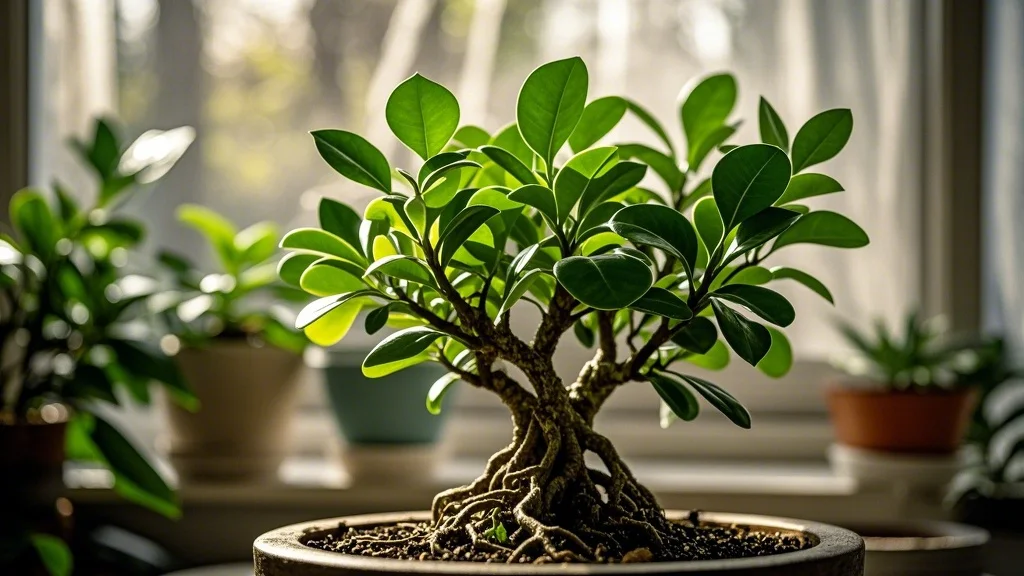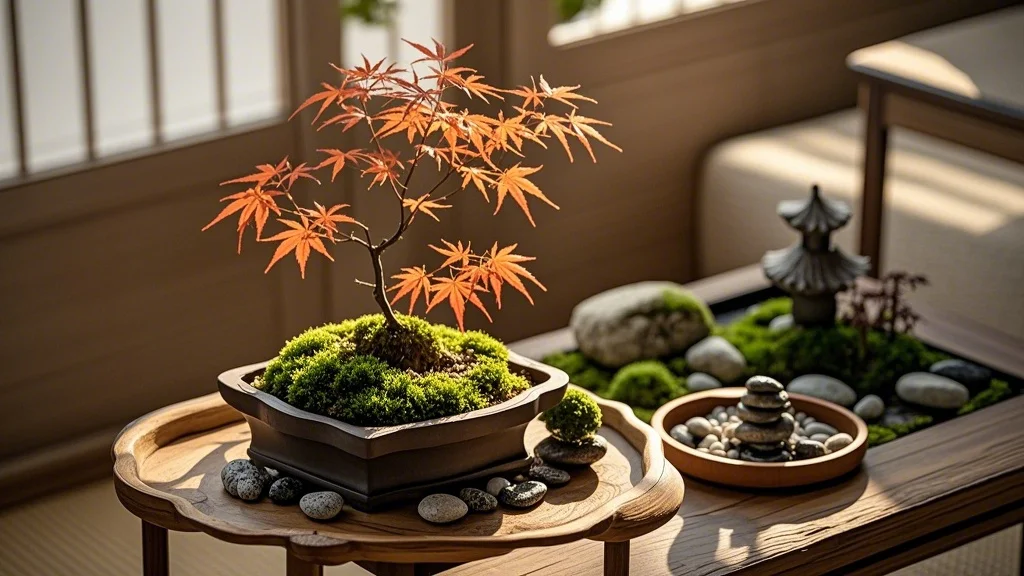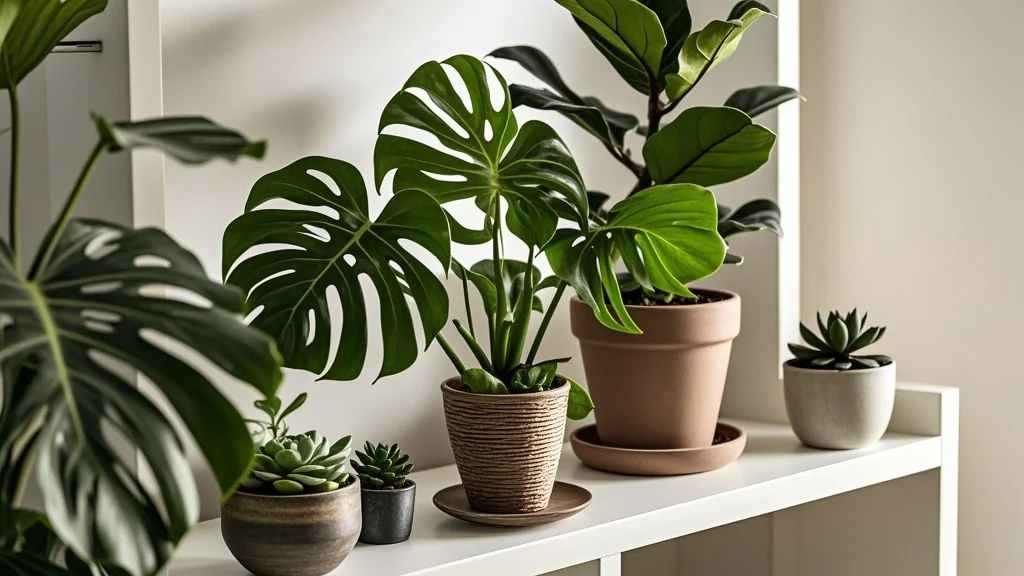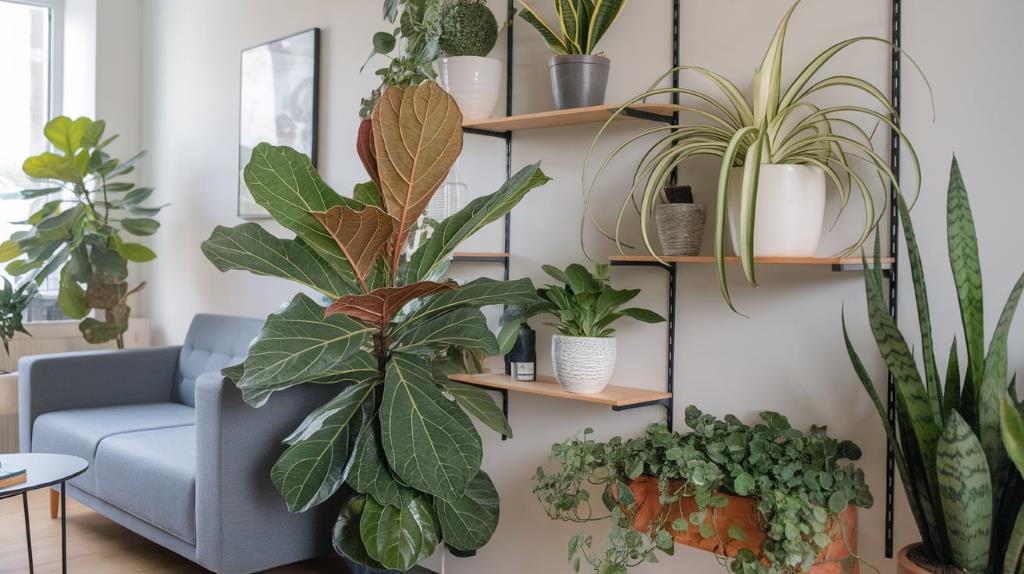Living in an urban apartment doesn’t mean you have to forgo the joys of gardening. Bonsai, the ancient Japanese art of growing miniature trees, offers a perfect solution for plant enthusiasts with limited space. These small, artfully cultivated trees bring a touch of nature and tranquility to even the tiniest of apartments. In this guide, we’ll explore the world of apartment bonsai, focusing on beginner-friendly varieties and essential care tips to help you start your bonsai journey.
Contents
- 1 What is Bonsai?
- 2 Benefits of Bonsai for Apartment Dwellers
- 3 Beginner-Friendly Bonsai Varieties for Apartments
- 4 Essential Bonsai Care for Apartment Growers
- 5 Creating a Bonsai Display in Your Apartment
- 6 Common Challenges and Solutions for Apartment Bonsai
- 7 Advanced Techniques for Apartment Bonsai Enthusiasts
- 8 Conclusion
What is Bonsai?
Bonsai is not a specific type of tree, but rather a horticultural technique used to cultivate miniature versions of full-sized trees in containers. The word “bonsai” literally translates to “planted in a container” in Japanese. This art form combines horticultural techniques and artistic principles to create living sculptures that mimic the appearance and scale of mature trees in nature.
Benefits of Bonsai for Apartment Dwellers
-
Space-efficient: Bonsai trees are perfect for small apartments, as they can be grown on windowsills, balconies, or small tables.
-
Air purification: Like other indoor plants, bonsai can help improve air quality in your living space.
-
Stress reduction: The practice of caring for bonsai can be meditative and help reduce stress.
-
Aesthetic appeal: Bonsai trees add a unique, natural element to your home decor.
-
Low maintenance: Many bonsai varieties are relatively low-maintenance, making them suitable for busy urban lifestyles.
Beginner-Friendly Bonsai Varieties for Apartments

When starting your bonsai journey in an apartment setting, it’s essential to choose species that are well-suited to indoor conditions and relatively easy to care for. Here are some excellent options for beginners:
1. Ficus Bonsai (Ficus retusa)
The Ficus bonsai is one of the most popular choices for indoor bonsai cultivation. It’s hardy, adaptable, and forgiving of occasional neglect.
Care tips:
- Prefers bright, indirect light
- Water when the top inch of soil feels dry
- Tolerates average room humidity
- Prune regularly to maintain shape
2. Chinese Elm (Ulmus parvifolia)
Known for its small leaves and attractive bark, the Chinese Elm is an excellent choice for beginners due to its resilience and adaptability to indoor conditions.
Care tips:
- Thrives in bright light but can tolerate partial shade
- Keep soil consistently moist but not waterlogged
- Responds well to regular pruning and shaping
3. Jade Plant (Crassula ovata)
This succulent plant is an excellent choice for those who tend to forget watering, as it stores water in its leaves and stems.
Care tips:
- Requires plenty of sunlight
- Allow soil to dry completely between waterings
- Tolerates low humidity well
- Prune to encourage branching and maintain shape
4. Fukien Tea (Carmona retusa)
With its small, glossy leaves and delicate white flowers, the Fukien Tea bonsai is an attractive option for apartment dwellers.
Care tips:
- Prefers bright, indirect light
- Keep soil consistently moist
- Benefits from higher humidity levels
- Regular pruning helps maintain its compact shape
5. Japanese Maple (Acer palmatum)
While typically an outdoor species, some varieties of Japanese Maple can be grown indoors with proper care, offering stunning foliage colors.
Care tips:
- Requires a cool period in winter for dormancy
- Prefers bright, indirect light
- Keep soil consistently moist but not waterlogged
- Protect from drafts and heat sources
Essential Bonsai Care for Apartment Growers
Successful bonsai cultivation in an apartment setting requires attention to several key factors:
1. Lighting
Most bonsai trees require bright, indirect light. Place your bonsai near a south-facing window if possible, but protect it from intense afternoon sun. If natural light is insufficient, consider using grow lights to supplement.
2. Watering
Proper watering is crucial for bonsai health. The frequency will depend on the species, pot size, and environmental conditions. Generally, water when the top inch of soil feels dry. Ensure good drainage to prevent root rot.
3. Humidity
Many bonsai species prefer higher humidity levels than typically found in apartments. Increase humidity by:
- Using a humidity tray filled with water and pebbles
- Misting the leaves regularly
- Running a small humidifier near the bonsai
4. Soil and Fertilization
Use a well-draining bonsai soil mix to prevent waterlogging. Fertilize your bonsai regularly during the growing season (spring and summer) with a balanced, water-soluble fertilizer diluted to half strength.
5. Pruning and Shaping
Regular pruning is essential to maintain the desired shape and size of your bonsai. Use clean, sharp bonsai scissors or shears to remove excess growth and encourage branching.
6. Repotting
Most bonsai trees need repotting every 2-3 years to refresh the soil and manage root growth. Repot in early spring before new growth begins.
Creating a Bonsai Display in Your Apartment

Displaying your bonsai effectively can enhance its beauty and your living space:
-
Choose the right location: Select a spot with adequate light and away from drafts or heat sources.
-
Use a suitable stand: A wooden or bamboo stand can elevate your bonsai and create a focal point.
-
Add complementary elements: Incorporate small rocks, moss, or miniature figurines to create a natural scene.
-
Consider multiple bonsai: Group different species or styles for a varied display.
-
Rotate regularly: Turn your bonsai periodically to ensure even growth and maintain its shape.
Common Challenges and Solutions for Apartment Bonsai
1. Limited Light
Solution: Use grow lights to supplement natural light, especially during winter months.
2. Dry Air
Solution: Increase humidity with a humidifier or pebble tray, and mist leaves regularly.
3. Pest Infestations
Solution: Regularly inspect your bonsai for signs of pests. Treat with neem oil or insecticidal soap if needed.
4. Overwatering
Solution: Ensure proper drainage and only water when the top inch of soil is dry.
5. Temperature Fluctuations
Solution: Keep bonsai away from drafts, air conditioning vents, and radiators.
Advanced Techniques for Apartment Bonsai Enthusiasts
As you gain experience with bonsai care, you may want to explore more advanced techniques:
1. Wiring
Wiring allows you to shape branches and create more dramatic forms. Use aluminum or copper wire and be careful not to damage the bark.
2. Root Pruning
Carefully trimming roots during repotting helps maintain the tree’s small size and encourages fine root development.
3. Grafting
For some species, grafting can be used to add new branches or change the tree’s characteristics.
4. Creating Deadwood
Techniques like jin (dead branches) and shari (exposed trunk wood) can add character and age to your bonsai.
Conclusion
Bonsai cultivation offers apartment dwellers a unique opportunity to connect with nature and practice the art of patience and mindfulness. By choosing the right species, providing proper care, and creating an attractive display, you can enjoy the beauty and tranquility of these miniature trees in even the smallest of spaces. Remember that bonsai is a lifelong journey of learning and experimentation. Embrace the process, be patient with your trees and yourself, and enjoy the rewards of this ancient art form in your modern urban home.
Whether you’re drawn to the delicate leaves of a Japanese Maple or the hardy resilience of a Ficus, there’s a bonsai tree perfect for your apartment and lifestyle. Start your bonsai journey today and discover the joy of nurturing these living sculptures in your urban oasis.









